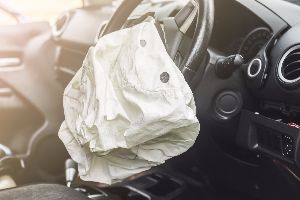A situation may arise whereby an individual is injured outside a covered vehicle whereby the negligent party either is uninsured or underinsured.
In such cases, the first inclination may be to discount the possibility of applying uninsured / underinsured coverage as the injured party was not operating or a passenger in a covered vehicle. However, under Ohio law, Courts have consistently held that uninsured / underinsured policies may apply even in cases where the claimant was not inside a covered vehicle.
Automobile insurance policies will in many cases include coverage for injuries sustained in an accident by an insured occupying a private passenger automobile or while getting into or out of a private passenger automobile. This begs the question, what is considered “occupying” or “getting into or out” of an automobile.
An insurance policy, like any written contract, will be construed by a Court with the objective of carrying out the intent of the parties. As such, a Court will give common words their ordinary meaning. If language in an insurance policy can be given more than one meaning, it will be construed liberally in favor of the insured and strictly against the insurer. In addressing the term “occupying” insured vehicles, the Ohio Supreme Court has held the determination of whether a vehicle was occupied by the claimant at the time of an accident should take into account the immediate relationship the claimant had to the vehicle, within a reasonable geographic area. As such, the claimant need not actually be inside the vehicle for the coverage to apply. Ohio Courts have further held that in making the determination of whether a claimant is covered, Courts should analyze whether the claimant was engaged in activity that was foreseeability identifiable with the use of the insured’s vehicle at the time of the accident. Below are some examples where Courts have found that a claimant was “occupying” an insured vehicle:
- claimants were surveyors working in the center of a highway when struck
- claimant struck after exited vehicle to assist a person in attempting to move a disabled vehicle
- claimant struck after exited vehicle to retrieve pop bottles 100 feet from insured vehicle
- claimant struck while walking toward insured vehicle
- claimant struck while performing brake work on insured vehicle
Given how Ohio courts have interpreted the term “occupying” when claimants are outside the vehicle, it is important to review the policy definitions and explore the potential of coverage under an injured party’s own policy. This analysis can also be applied in cases resulting in death when the deceased’s automobile policy includes an Accidental Death provision which in many cases will include similar language regarding occupancy of a vehicle.
Tagged In:Car InsurancePersonal Injury




